- Call us: 01444 237070
- Contact Us
- Stores
- Sign In / Register
-
- Back
- Used Cameras
- Used Accessories
- Used Lenses
- Used Video
- Used Film Equipment
- Used Stock Alert
- Used Blank Test
- Sell or Part Exchange
- Used Clearance
- Recently Added Used Equipment
- Park Picks
- All Used Black Friday Deals
- Faulty
- Trade-In
- Blog
- New in
- Call us
- Contact us
- Stores
- Sign in
- Categories
- Tips & Inspiration
- Reviews
- News
- Events
- Features
- Buying Guides
- Competitions
Canon RF 75-300mm f/4-5.6 Lens Review
Over the years I’ve been incredibly fortunate to try out a range of Canon wildlife lens options for reviews, including the amazing super telephoto Canon RF 100-500mm Lens review and the more affordable Canon RF 600mm F11 IS STM review.
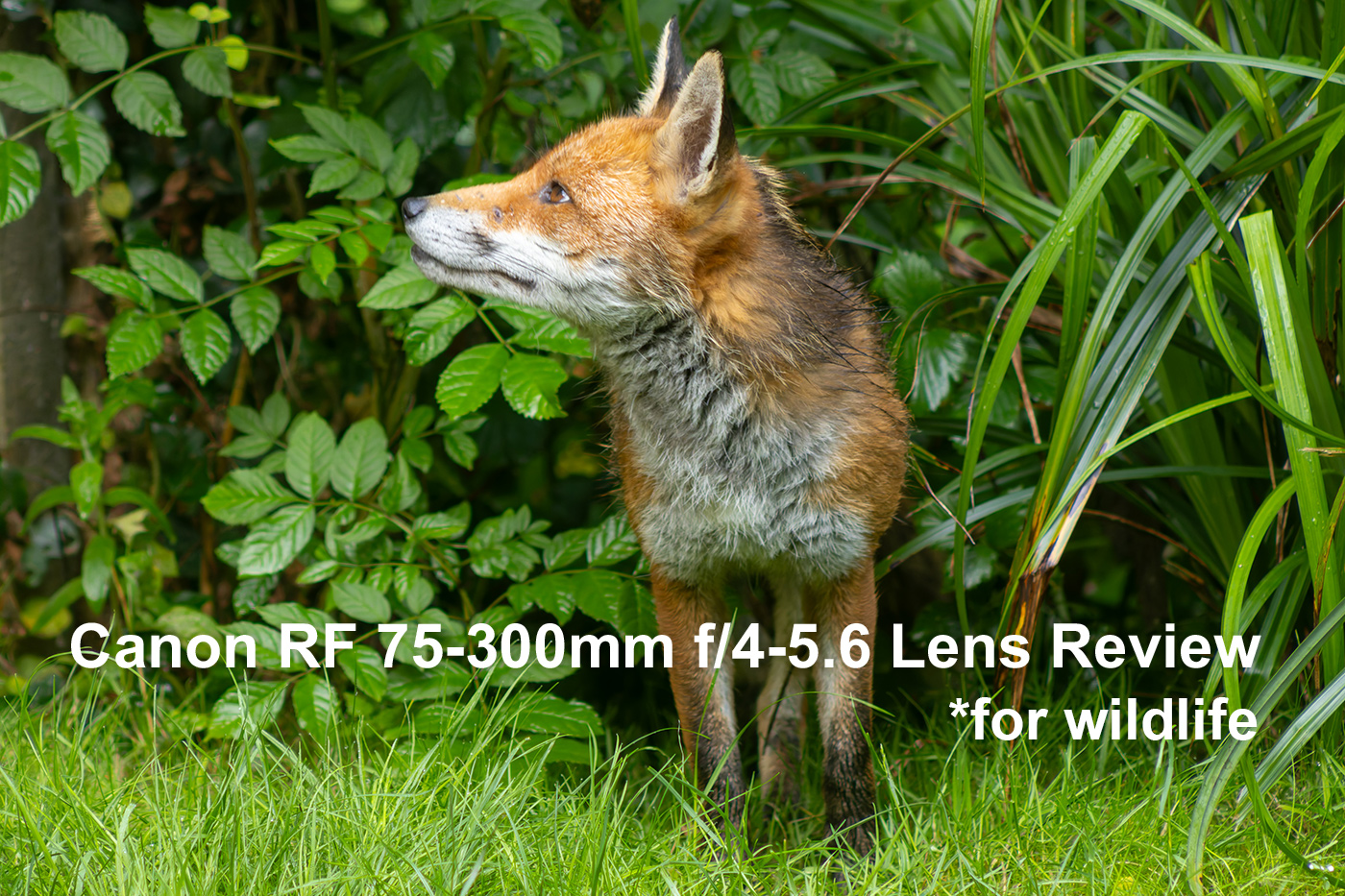
So it was with excitement and a degree of anticipation that I embarked on our budget camera gear for wildlife series, which begins with this Canon RF 75-300mm f/4-5.6 lens review (for wildlife).
Having learned that this new mirrorless telephoto zoom from 2025 is based on an original Mark III EF version from 1999, I did wonder whether it would stand up to the demands of the Canon EOS R7, which is the crop sensor mirrorless camera that was used on for this review.
With optics and mechanics from an older DSLR model, the RF 75-300mm f/4-5.6 is a bit of a contradiction, providing beginners and budget-conscious photographers with both strengths and weaknesses, a bit of a Jekyll and Hyde if you will. Surprisingly it captured my favourite shot of the entire series, although there were also a few results that fell short.
Whether you’re a beginner wildlife photographer looking for the best wildlife lens for Canon on a budget, or just interested in what animals you can photograph at these types of focal lengths, join us as we explore how the RF 75-300mm performs in our hands-on review with sample photos.
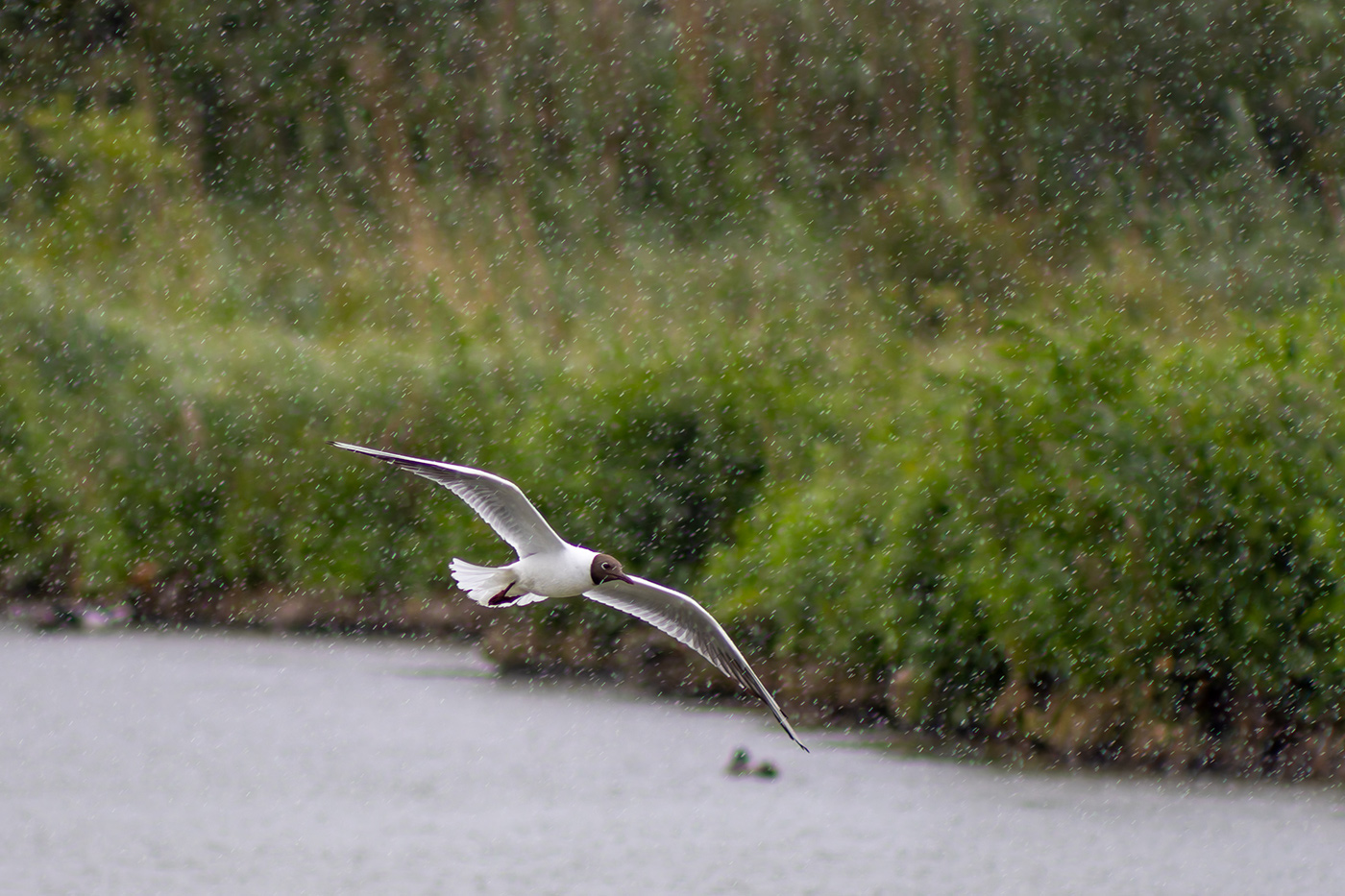
Sample Seagull in flight II at 290mm. Camera settings: 1/1000 sec. f/5.6. ISO 500 (right click to enlarge)
Canon RF 75-300mm f/4-5.6 Sample Images
Nick Dautlich captured these the RF 75-300mm f/4-5.6 lens sample images together with the EOS R7 camera body, where it provides a full-frame equivalent of 120-480mm because of the 1.6x crop factor.
Photos were shot in RAW and JPG, with minimal editing to taste, and were captured during several outings. I used a combination of auto ISO with minimum shutter speed set to 1/1000 for birds in flight, and used full manual settings to maintain control for some of the other shots. The camera’s AF system was set to animal/bird detection with continuous AF engaged (AI Servo AF)…
As mentioned in Photographing Local Wildlife by Danny Green, staying local gives you lots of opportunities to get to know wildlife spots and learn animal behaviour. I followed this advice and during several outings, tried to capture interesting subjects, ending up at various local ponds, woodlands and gardens in the hope of putting this lens through its paces.
Let’s find out what features it offers next.
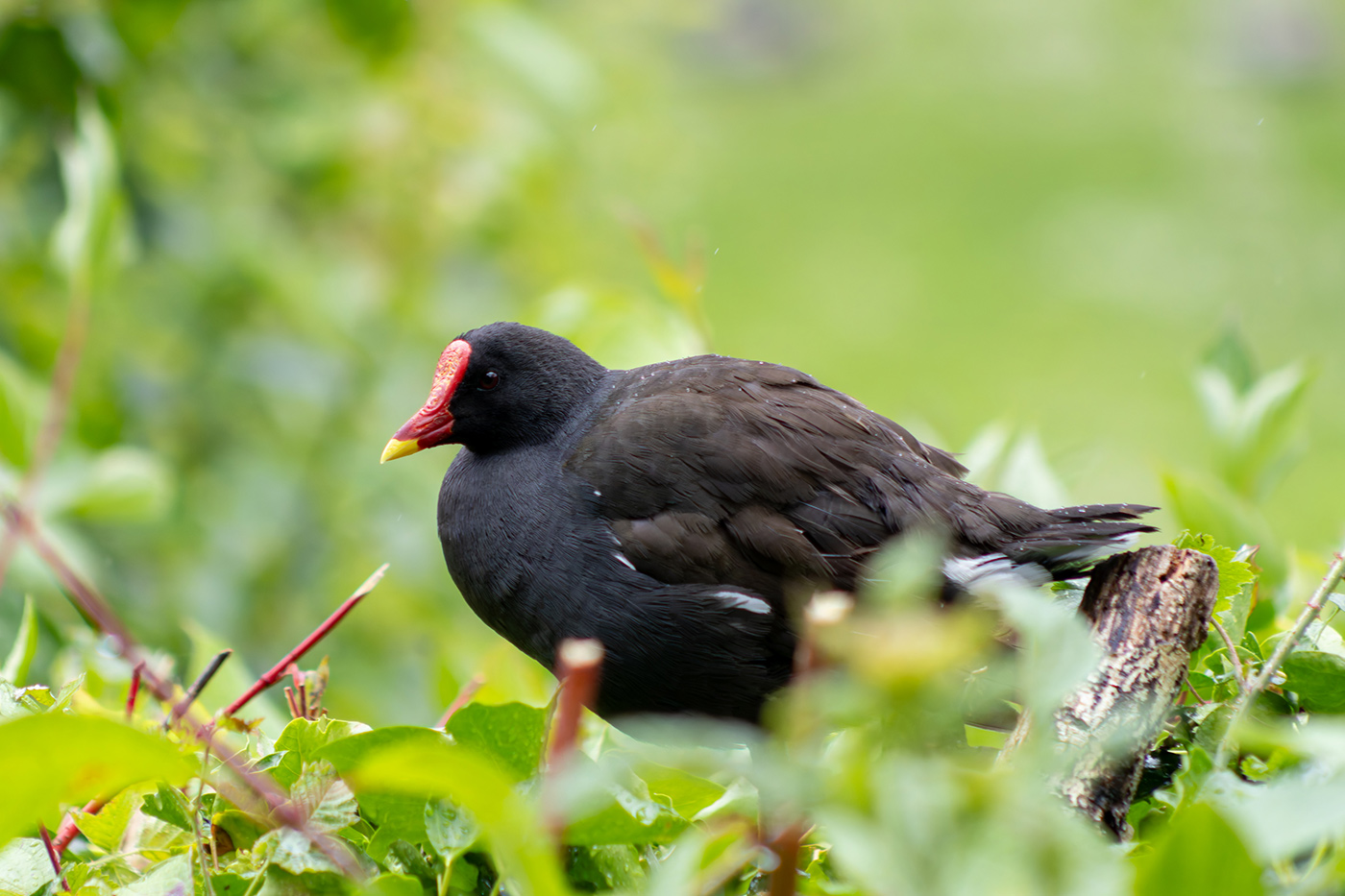
Sample Moorhen at 220mm. Camera settings: 1/1000 sec. f/5.0. ISO 2500 (right click to enlarge)
Key features at a glance
With an incredibly competitive price of just £289.00, the RF 75-300mm f/4-5.6 isn’t expected to deliver premium performance, which lenses costing 10x more may do. That said, it does offer creators who are new to photography, or wildlife specifically, the opportunity to dip their toe in the water and capture distant subjects without spending a lot of money unnecessarily. If you discover it’s not for you, simply trade-in the lens and get something else!
In order to achieve such an affordable price, Canon has utilised the optics and autofocus system from the old EF version, and other features include:
- 507g light weight design
- Extends when zooming
- 7-blade circular aperture
- Canon’s Super Spectra Coating to maintain contrast
- 1.5m minimum focus distance at 300mm
- Compatible with full-frame and APS-C mirrorless EOS R camera bodies
This is an extremely lightweight, compact and cost-effective Canon telephoto lens for wildlife, which provides a great zoom range at a very accessible price. Notably weather sealing was omitted, so I had to duck for cover during some heavy downpours, which turned out to be fairly frequent when shooting with this lens.
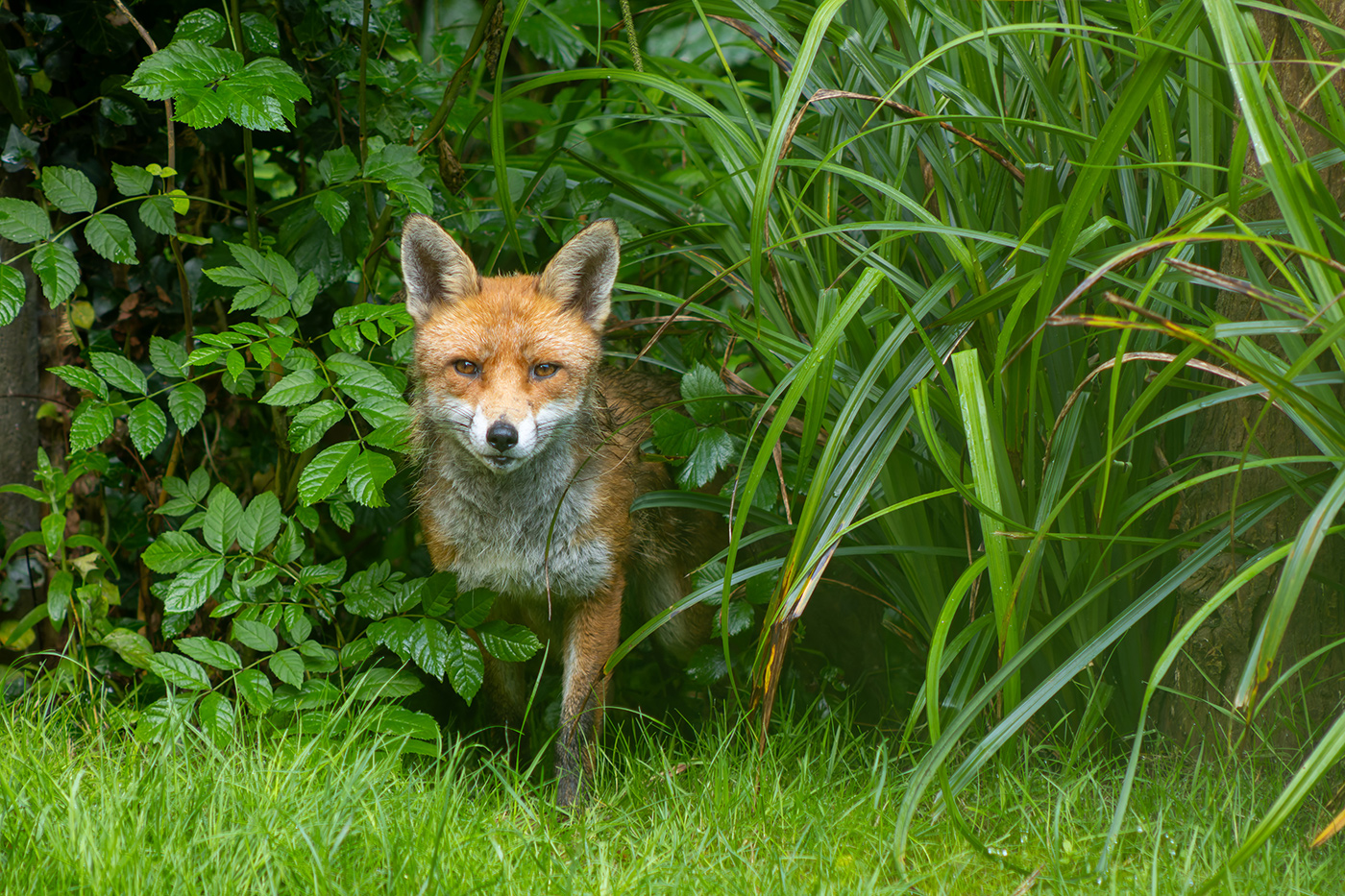
Sample Fox at 190mm. Camera settings: 1/320 sec. f/5.0. ISO 1250 (right click to enlarge)
It doesn’t have image stabilisation either, which many users would expect to see at this focal range. That said, the R7 body has an excellent 5-axis in-body image stabiliser, which allowed for handheld shooting at slightly slower speeds. It does pay to be mindful that your subject isn’t moving so quickly as to cause blur, unless that’s the look you’re after, of course. Find out more about the body in our Canon R7 Review for Photography, which goes into much more detail than we cover here.
Some other factors which keep the price of the lens down include the rotating front element when zooming, so this is not ideal for a variable ND or polarising filters, which will rotate and change effects. Users should also be aware that turning the manual focus ring before switching to MF could damage the DC motor, which is an older design that doesn’t cater so well to manual focus override.
There’s also no lens hood included, which would be useful to reduce light that causes a loss of contrast, especially at these longer focal lengths. With these shortcomings out of the way, let’s talk about some of the good stuff, like usability in the field.
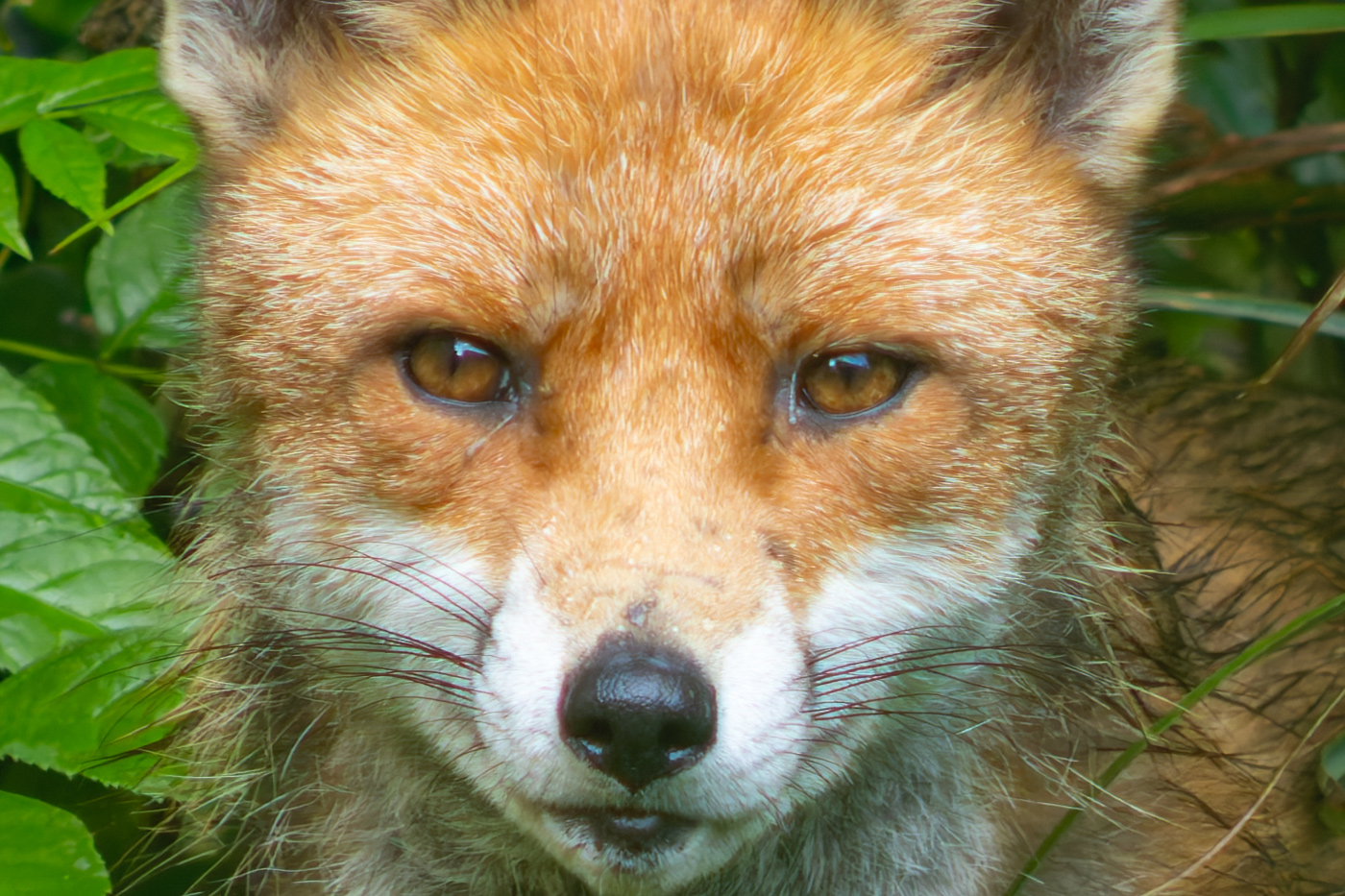
100 percent crop of the previous fox image
How does the RF 75-300mm F/4-5.6 Lens handle for wildlife?
I found this zoom to be incredibly portable and easy to handle. It doesn’t weigh you down or slow you when scouting and photographing wildlife, and for this reason it is a great option, although there were some caveats when capturing fast-moving subjects.
These include the somewhat noisy autofocus system, which makes a distinct sound that is not ideal if you want to work silently or capture video. The AF system does support Dual Pixel CMOS AF subject tracking though, and it was quick enough to get a good percentage of sharp keepers in every situation I encountered.
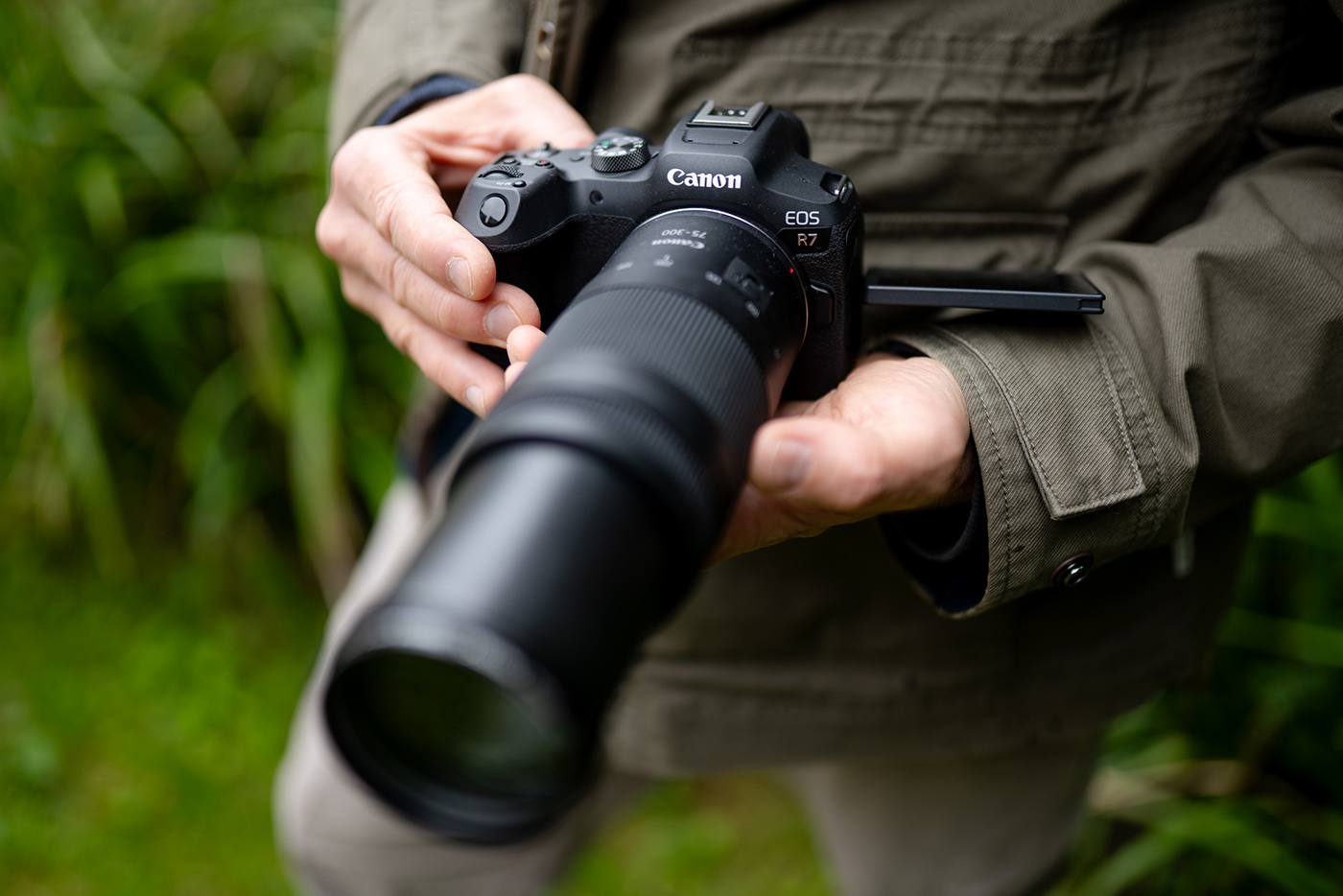
I was surprised by the focus speed for birds in flight, capturing seagulls in heavy rain as they swooped over the water, and slower ducks preening after rainfall. With SERVO engaged, the zoom extends in and out quite randomly and noisily, which you generally don’t notice with other telephoto lenses. Although it didn’t impact any of my shots, I can imagine it would be a disadvantage if your subject is very shy or you’re shooting in a particularly quiet environment. All in all this is a good starting lens, which is super light for the range and easy to work with.
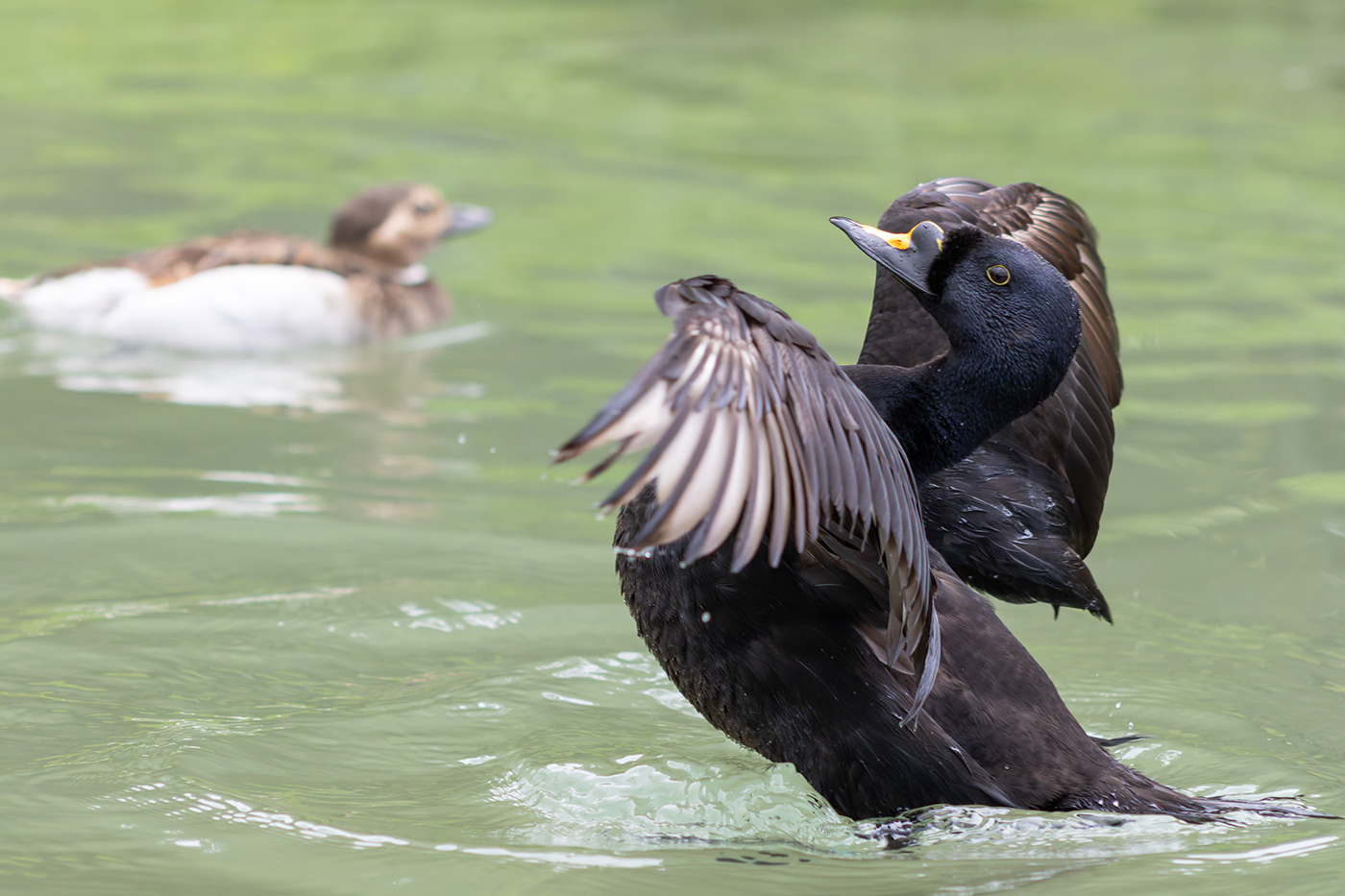
Sample Black Scoter at 155mm. Camera settings: 1/1000 sec. f/5.0. ISO 2500 (right click to enlarge)
Image quality
Good levels of sharpness and resolution are important at telephoto reach when you’re capturing distant or small subjects like birds and wildlife, and the RF 75-300mm f/4-5.6 is suitably sharp, especially in the centre of the frame. It resolved the 32.5 megapixel sensor in the EOS R7 quite well, and I’ve included a couple of 100% screen captures so you can see the amount of detail you can expect at near and distant focal lengths.
I would say that it is probably better on a full-frame or APS-C camera with less megapixels, like the 24MP R50 or R100. Either of these would give you a great wildlife kit for under £1,000. You could also pop it on a full-frame Canon EOS RP, which we looked at in our post Is the Canon EOS RP Still Worth Buying in 2025? To avoid any unnecessary suspense, I say go for it, you won’t be disappointed by the RP.
Wherever you place the subject in the frame, the lens is very good at 75mm, and I imagine that stopping down a little would draw out even more. I shot wide open mainly, as available light was quite low in rain and cloudy conditions.
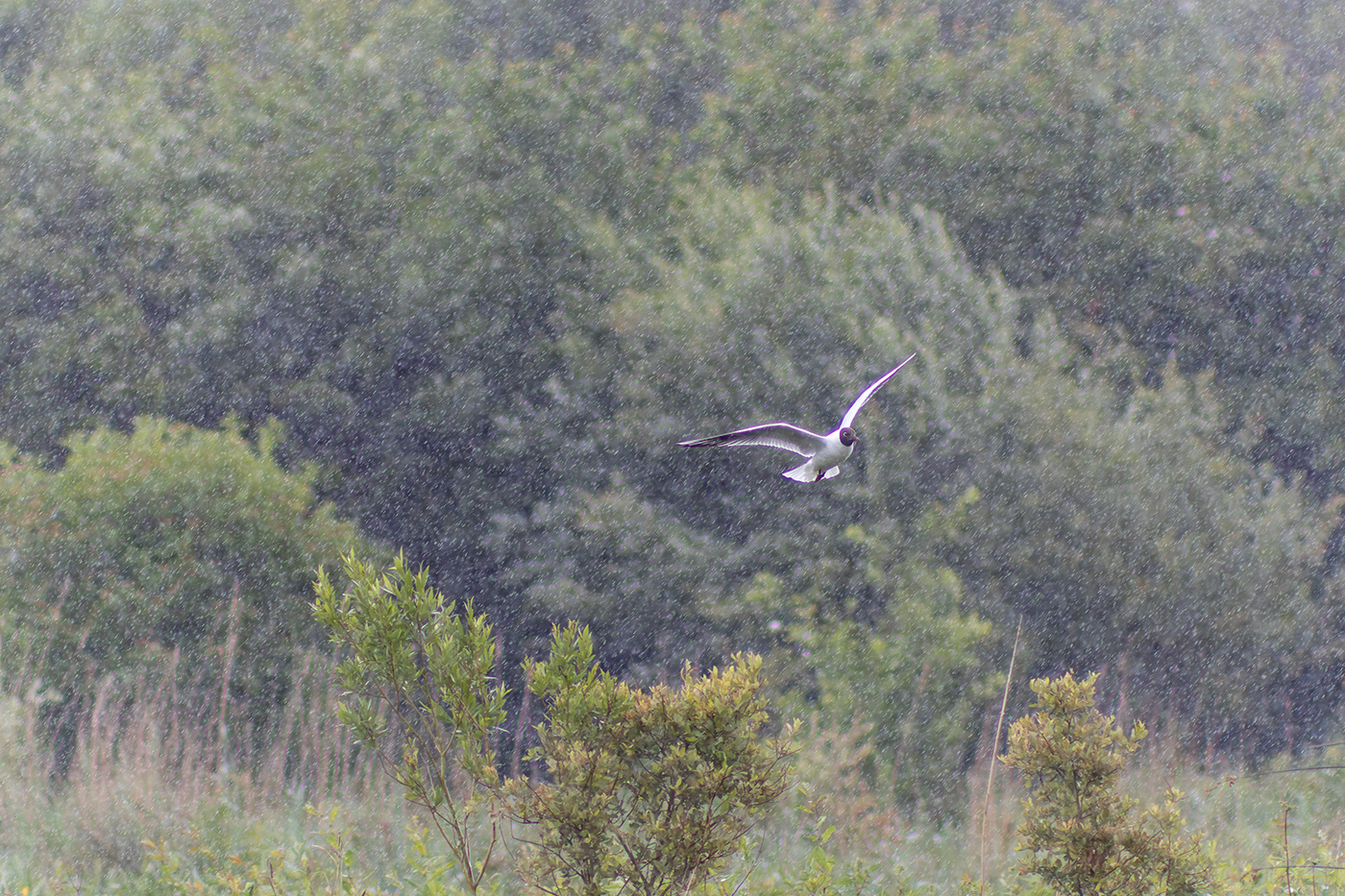
Sample Seagull in flight at 300mm. Camera settings: 1/1000 sec. f/5.6. ISO 1250 (right click to enlarge)
At 300mm the sharpness dropped compared to shorter focal lengths, and the lens displayed very noticeable purple fringing (also called chromatic aberration) in high-contrast situations, particularly where near-black and white areas met, or focus was slightly off. This is visible in the white seagull wings and also in the black fox whiskers against the white fur. While this is not a lens for pixel peeping, it does perform its intended role well enough, though it is best not to examine your results too closely if you captured contrasty subjects.
Out of focus backgrounds can be rendered very nicely, with smooth blur and strong subject-to-background separation in certain conditions. This is especially apparent in the shot of a moorhen and the close-up of the black scoter, which both have backgrounds that melt away due to the subject / background spacing.
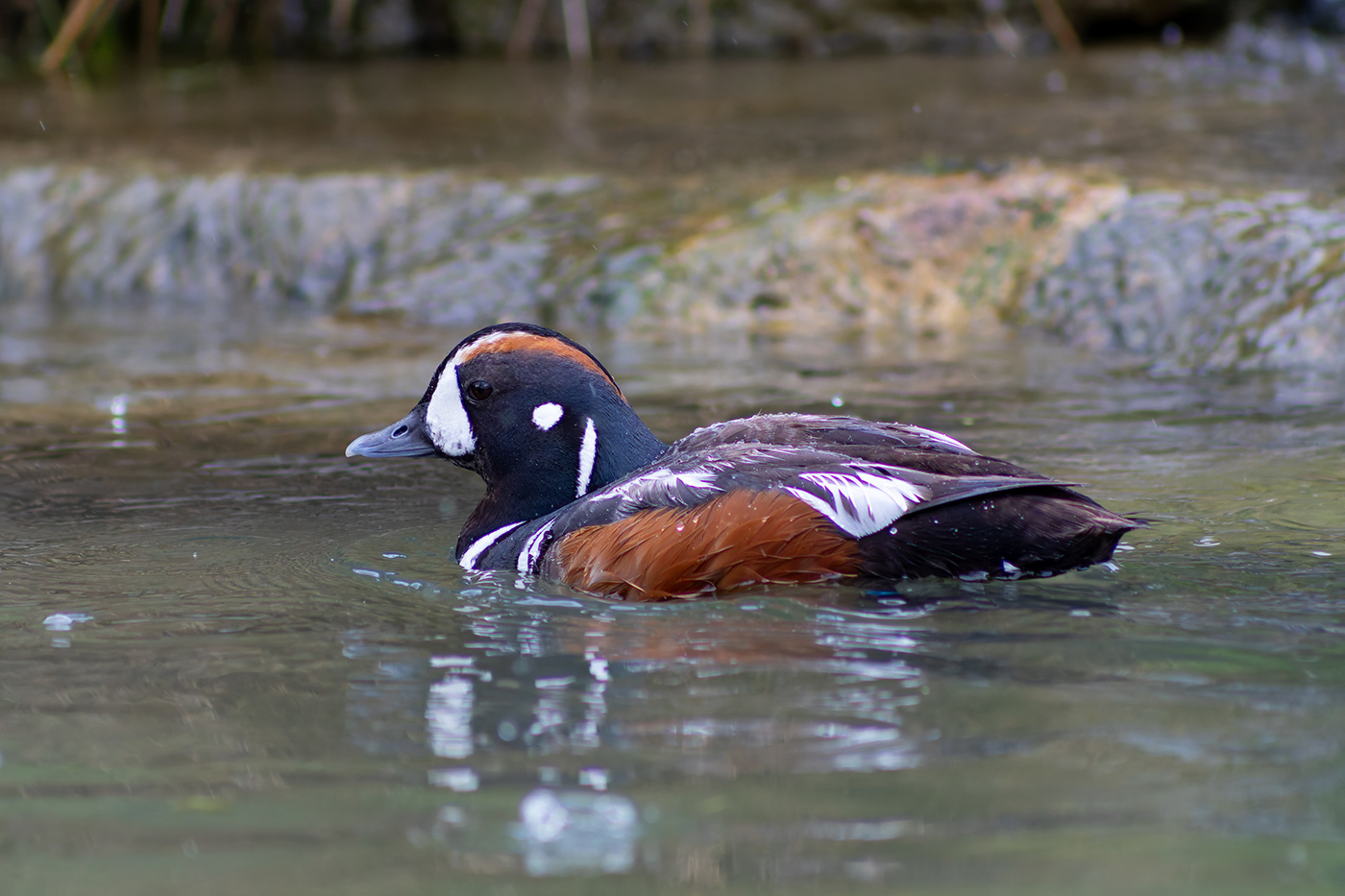
Sample Duck at 300mm. Camera settings: 1/1000 sec. f/6.3. ISO 2500 (right click to enlarge)
Final thoughts
For all of its flaws, this lens produced some beautiful images. I was extremely pleased with the fox photos, and many of the bird photographs are rendered with excellent colour and contrast straight out of camera.
Shooting high-contrast subjects at 300mm is probably best avoided, and if there is enough light, stopping down to f/8 should help deliver better results on a full-frame and crop-sensor camera. It can absolutely deliver fantastic results, especially when used under 200mm and with the price taken into account.
If you are after something really budget-friendly to establish whether you like telephoto subjects such as wildlife, sports, action and more, this is a good option that will help you decide if these genres are for you.

Alternatives
There are some alternative budget-friendly Canon lenses for wildlife photography to consider, which could give you great results from day one, but expect to pay a little more. These include the RF 100-400mm F/5.6-8 IS USM Lens, which provides a longer zoom range, better magnification, faster and quieter AF and 5.5 stops optical stabilisation. The downside is that it costs £719.00, although you might find it on offer.
Another option is the fixed RF 600mm F/11 IS STM, which provides excellent reach and great image quality, albeit without any zoom capability. If your subjects are further away, this might be a good choice, albeit at a price of £879.00 before any offers.
These go to show just what good value the Canon RF 75-300mm f/4-5.6 Lens is, so if this sounds like a bargain, grab one today and head out and see which wildlife shots you capture, and don’t forget to share them with us on socials.
Our Budget Wildlife Series buying guides explore affordable cameras and lenses from different brands, to see whether you really need to spend thousands on gear, or if more accessible equipment can still capture special moments and great images.
Share this post:
By Nick Dautlich on 01/07/2025
Nick Dautlich
Senior Content Writer and Product Reviewer
Nick Dautlich is the Senior Content Writer and Product Reviewer at Park Cameras, with over 15 years of photography experience. A Sony Imaging Professional and expert reviewer, Nick has worked with major brands such as Canon, Sony and Nikon. His work is also featured on Vanguard World UK’s website, Capture Landscapes, and Shutter Evolve. Nick’s photography includes National Trust projects and magazine covers and he is passionate about landscapes and storytelling. Nick also enjoys hiking and teaching his children about nature. Learn more on his profile page.
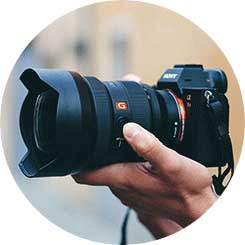
Trade in your old equipment
Fast and easy trade in service ensures your old gear is collected efficiently and you are paid quickly! It's very simple to trade in your unwanted photography gear. Just head over to our dedicated Sell or Part Exchange page, fill out the details, and we'll get back to you with an offer for your old gear. Take the cash, or put it towards the cost of your new gear. It's up to you! Find out more
sign up to the newsletter
Keep up to date on the latest photography news, events and offers. Sign up now